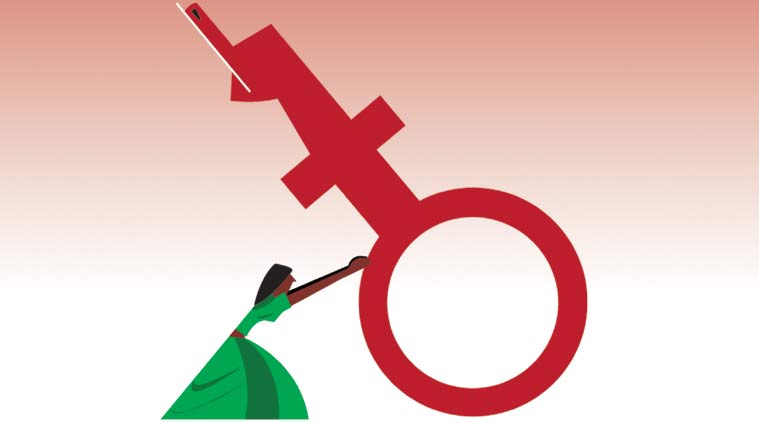Today there is growing consensus that women must play a greater role in the political affairs of the country. They have to be involved in the decision making processes of the government at various levels.
A major breakthrough was made through the 73rd Amendment to the Constitution of India in 1992 which introduced 33 percent reservation for women at grassroots levels (Panchayati Raj Institutions). Article 243 (D) also provided that not less than one third of the total number of seats for the offices of the Chairpersons (Sarpanch) at each level would be reserved for women. Different states across the country implemented these provisions and saw one million women getting elected at grassroots thus creating a silent revolution. It provided the much needed push, an impetus for women to enter local politics and occupy the centre stage rather than be mere recipients at the periphery. The rationale behind reservation was four-fold. It aimed at extending democratic justice, fuller resource utilization, ensure women empowerment, and promote village development. It envisaged greater inclusion and broad based democracy.
Various studies conducted in India to understand the impact of reservation on both, women empowerment and village development, reflect interesting observations. It is observed that there is a considerable increase in policies and programmes which benefit rural women. There is feminine perspective to the process of planning, policy formulation and execution and there is a sea change in the focus of rural administration towards important facets like health, nutrition, children’s welfare, family care, drinking water etc. There are instances where elected women in some states have taken part in protest and rallies against wages and for drinking water.
In Arunachal Pradesh some of women leaders have even faced imprisonment in the process of persuading the Government to build a twelve-bed hospital for women. A Sarpanch, an old tribal woman aged 80, had set eradication of illiteracy from the village as her top priority in a Panchayat in Tripura and each and every girl child attended school in this village. Women have raised many issues like alcoholism, lotteries, drinking water, health facilities, etc. It is noted that in the implementation of Swachh Bharat Abhiyan, grassroots leaders, especially women, are playing an increasingly pivotal role in accelerating this process. This is a great leap forward towards realising Mahatma Gandhi’s dream, who wanted women to enter politics to cleanse it and feminise it by bringing in a spirit of selfless sacrifice.
Studies were conducted by the author to gauge the impact of reservation in Goa and the following observations were made. There is predominance of women panchas within the age group of 31-50 years. A majority of them were married and were housewives. Minute observation reflects that those who were within the age group of 25-32 and were not married were more assertive than others. This could be because they had better educational qualifications, they entered politics voluntarily and experienced less pressure from the home front. It was observed that in many cases male members in the family dominated married women panchas. In spite of existence of Uniform Civil Code (UCC) in Goa, high female literacy rate and progressive society, there were cases where women were used as proxies. Proxies are those who display lower level of political awareness, owe their loyalty to their family, and they enter political arena for protecting the ward (constituency) of their male relative. There were also a few cases of “Sarpanch-Pati’. These were the cases where elected women never attended any meeting or made any decision but all panchayat work was actually carried out by their husbands. This scenario is discouraging because if women are expected to follow the lead of their husbands in activities outside the home, it is hardly likely that they will be able to act as independent individuals.
An attempt was made to understand the stand of elected women leaders on corruption, as corruption is faster increasing at grassroots level. A ray of hope emerged when it was found that some of the women panchas did protest against issues like corruption. A woman Sarpanch was adamant and refused an illegal offer from the earlier Sarpanch to ask for grants for laying a pipeline in the locality where there was a pipeline already laid eight years back and which was in good condition. Another woman Sarpanch narrated how she was pressurized by a so called ‘privileged’ person from the village to issue him a license to build a cowshed in the centre of the village, but she refused to bow down to such pressures. Another woman Sarpanch in a swift move removed the illegal fencing of an ‘established’ villager which was encroaching upon the public pathway.
Though these examples are refreshing, we cannot sideline the fact that women being new entrants in politics lack an independent power base of their own. So for their own political survival they too may imitate the autocratic model of male leaders of retaining control, and going down to the ‘practical things of politics’. There were also instances where the male members in the family coaxed women to make money through illegal means. Women did not object probably because their wellbeing in the family depended on the goodwill of the men.
Patriarchy, operating both subtly as well as overtly, also has been influencing women leadership. The women leaders are always among males – male Panchas, Secretaries, Talathis, Government officials and even the public who visit the Panchayat largely are males. This does put a lot of pressure on these women leaders. Many a times, they are dependent on the male members, in Panchayat or at home, who have been dominating politics for years. As a result women may succumb to these pressures and forget to draw their own line, develop their own leadership style or do anything towards their gender. And this has become a bigger hurdle for women empowerment, which calls for urgent attention.
It is important that elected representatives are provided with proper training and guidance from time to time. The women leaders also need to be more dedicated and sincere towards their responsibilities. It is disheartening to note that many of them have not even read the Goa Panchayati Raj Act 1994. Women who get elected on reserved seat are not very enthusiastic to contest again once the ward is deserved. And from among those who contested, only few have been able to get re-elected. This reflects, may be partly, the failure of women representatives to establish the ‘connect’ and confidence in the people.
To sum up, the 73rd amendment has created a healthy environment for equal participation for women in rural areas. Women are getting an exposure to the outside world, and it has improved their status in society as well as at home. The fear that women’s entry in political field will disturb the harmony of homes has been clearly proved wrong. Elections to the Panchayats in Goa are scheduled for May 2017. Goa has a progressive culture and satisfactory education levels. With such a congenial atmosphere one can expect the newly elected women panchas to understand their role better, and work towards women empowerment and village development with greater zeal and vigour.
- Seema Salgaokar



























